This is a very rare form of epilepsy in infancy which is twice as common in boys than girls. It used to be called Benign Myoclonic Epilepsy of Infancy. It accounts for 1% of childhood epilepsy, beginning in the early months of life from 4 months up to to 3 years - but usually developing between 6 months and 18 months.
Early development is typically normal. In most cases there is no identifiable cause for this epilepsy but approximately one‐third of children also have another family member who either has epilepsy or febrile seizures.
The condition is self-limited in that it is expected to remit by a certain stage, within 6 months to 5 years from onset.
Symptoms
The seizures themselves are brief and may not initially be noticed. They involve head nodding and usually occur several times a day. They may cause loss of balance which may lead the child fall. As the child’s head drops forward onto its body, their arms tend to move upwards and outwards, while their legs may flex. Rolling of the eyeballs upwards is sometimes seen. They may make a cough sound. In most cases there is no identifiable cause for this epilepsy type, but in about 10% of cases a family history of febrile seizures or epilepsy is present.
Some children (about 30%) will have reflex seizures triggered by sensations like touch or sounds, and fewer will have photosensitive seizures in response to light stimulus. Febrile seizures may occur before or after the onset of myoclonic seizures and in 10% of children, generalised tonic clonic seizures may develop in adolescence.
Diagnosis
A full account of the seizures and of what happens during the seizures is essential for the doctor making the diagnosis and video evidence is very helpful also. The EEG (electroencephalogram) test which records the ongoing electrical activity in the brain shows evidence of abnormal discharges of generalised spikes and waves or polyspikes and waves, at approximately 3 hz, particularly as the child is falling asleep.
The abnormalities can be exacerbated by exposure to flashing lights or other reflex triggers such as sudden sounds or touch. Other tests such as genetic tests may be ordered to tell these seizures apart from other types of myoclonic epilepsy that emerge in this age group. Imaging such as MRI may be carried out.
Treatment
The seizures respond very well to anti-seizure medications in 80% of children treated first with Sodium Valporate (Epilim). Other medications that can be effective include levetiracetam (Keppra) and clonazepam (Rivotril).
In addition to treatment reducing exposure to triggers might be helpful but it is not always possible, especially with febrile illness and reflex triggers. If seizures become well controlled the doctor may discuss withdrawing medication after some time.
Prognosis
Most of the children (60-85%) who have myoclonic epilepsy in infancy have normal development and don’t show behaviour and developmental difficulties. However, there is some risk of delayed development, in particular, in 30% of children there may be delayed language, and issues with learning and behaviour.
It is not possible to predict which children will have later difficulties in learning, behaviour and attention, but monitoring of development and access to early intervention services will support those children who might be at risk of developmental issues. About 20% of children will continue to have seizures.
- Further information on Anti-Seizure Medications can be found by visiting the 'Treatment' section of our website.
- Further information on diagnosis can be found by visiting the 'Diagnosis' section of our website.
- Other useful resources surrounding epilepsy can be found throughout our 'Epilepsy Information' section.
- If you need any information or support regarding epilepsy, contact your local Community Resource Officer - you can find their details by visiting the 'Our Local Service' section of our website.
